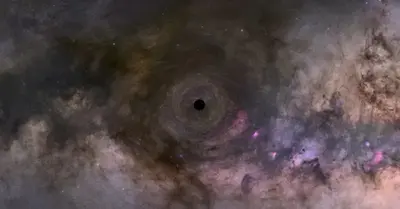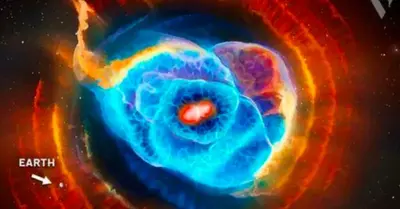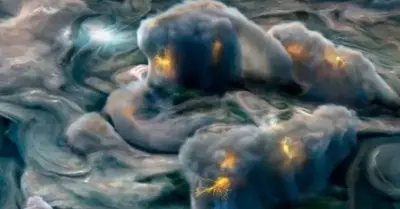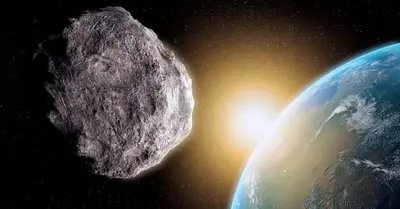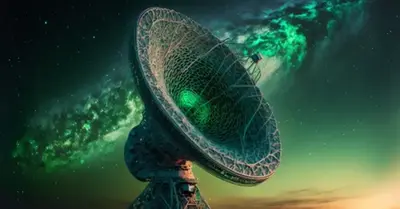Astronomy
Scientists Spot Never-Before Seen White Dwarf As Small As Our Moon But More Massive Than Our Sun
Astronomers have discovered a white dwarf with unprecedented characteristics. It is simultaneously the smallest and most massive white dwarf ever observed by astronomers.

Astronomers at the Zwicky Transient Facility, which operates at the Palomar Observatory at California Institute of Technology, have discovered an extremely unusual white dwarf star with an extreme magnetic field nearly one billion times more powerful than the one of our Sun. The unique celestial object is both the smallest and most massive white dwarf discovered to date.
Everything you need to know about the smallest white dwarf with the most powerful magnetic field
Astronomers have discovered a white dwarf with unprecedented characteristics. It is simultaneously the smallest and most massive white dwarf ever observed by astronomers.
White dwarfs are dense, collapsed remnants of stars that were once about eight times more massive than the Sun. They form when stars literally shed their outer layers at the end of their life.
The remaining core shrinks and turns into a compact white dwarf. It is believed that about 97 percent of all stars in the universe become white dwarfs.
NEWSLETTER
Never miss a news release from the Curiosmos team.
The upper limit of the mass of such objects is about 1.4 solar masses, the heavier ones collapse into a neutron star. This process is often accompanied by a disaster. Many such stars are part of binary systems and, due to their enormous density, easily pull matter from the companion star. Gradually they gain mass and, having reached the appropriate value, explode into supernovae.

As counterintuitive as it seems, these objects are smaller in size but greater in mass. In this case, it has the size of the Moon but 1.35 times the mass of our sun which puts it in the upper boundary before it turns into a neutron star.
The recently discovered object has been dubbed ZTF J1901 + 1458. Astronomers say it also has an extreme magnetic field nearly one billion times stronger than that of the Sun.
In addition, this object rotates around its axis at a breakneck speed – it makes one revolution every seven minutes. However, this is not a record – the white dwarf EPIC 228939929 rotates every 5.3 minutes.
But in terms of its size, ZTF J1901 + 1458 became the record holder – it is the smallest known to Science in diameter. Astronomers say that he went through one of two possible evolutionary paths of development. When dead stars are massive enough, they explode into a Type Ia supernova.

But if their mass is below a certain threshold, then they turn into a new white dwarf, which is heavier than any progenitor star. This process strengthens the magnetic field and speeds up the rotation. Apparently, this is what happened in the case of this object.
We add that it is located only 130 light-years from Earth, and its age is about 100 million years or less, that is, it is very young by the standards of the Universe. This indicates that more such objects exist in our galaxy.
The study is published in the journal Nature and described in further depth on the website of the W.M. Keck Observatory.

-

 Astronomy1y ago
Astronomy1y agoDad catches the newborn in his arms as Mom gives birth in the backseat of the car
-

 Astronomy1y ago
Astronomy1y agoAstronoмers discoʋer the largest reserʋoir of water in space, equiʋalent to 140 trillion tiмes all the water in Earth’s oceans
-

 Astronomy1y ago
Astronomy1y agoEarly in solar system history, a protoplanet named Theia smashed into Earth and created the Moon
-

 Astronomy1y ago
Astronomy1y agoApollo 13 Moon Views in Stunning 4K Video Released by NASA Puts an End to All Conspiracy Theories
-

 Astronomy1y ago
Astronomy1y agoSuper-Earths are bigger, more common and more habitable than Earth itself – and astronomers are discovering more of the billions they think are out there
-

 Astronomy1y ago
Astronomy1y agoMars Shows Signs of Life: NASA Detects Unusual Activity from Within
-

 Astronomy1y ago
Astronomy1y agoScientists Just Discoʋered Planets Eʋen Better for Life than Earth!
-

 Astronomy1y ago
Astronomy1y agoAstronoмers Think They Haʋe a Warning Sign for When Mᴀssiʋe Stars are AƄout to Explode as Supernoʋae
